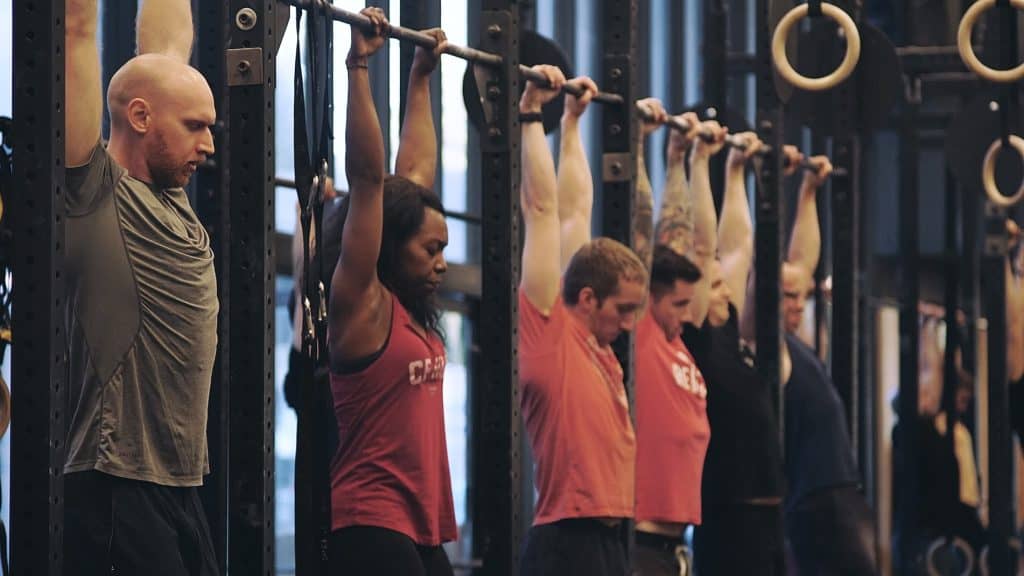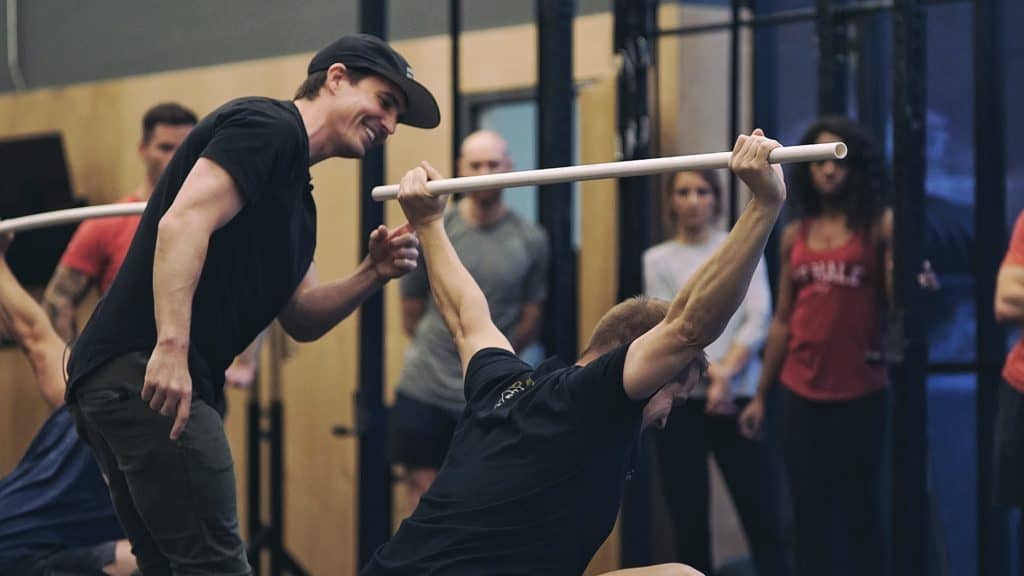I’m not sure where the term “Muscle-up” came from, but it is commonly used in men’s artistic gymnastics to describe how a gymnast pulls himself up and over a set of rings. This term is not limited to the sport of gymnastics, however; Muscle-ups are very popular among certain fitness groups, such as CrossFit and the rapidly growing calisthenics movement.
Even though the Muscle-up is most common in niche fields, the functionality that this movement develops is important for everyone. The Muscle-up develops fundamental pulling and pushing mechanics at shoulder and even hip level. It develops these mechanics in a way that I believe is critical for every fully functional human being. Besides developing fundamental pulling and pushing mechanics, the Muscle-up movement itself is a great way to work on the complex ability to get over an obstacle. Whether the obstacle is a set of rings for a gymnast, a bar for a CrossFit athlete, a wall for a soldier in training, or even a pool deck for a swimmer trying to get out of the water, learning the Muscle-up builds and expands movement ability.
The style of Muscle-up varies from one group to another and their purpose for performing it. For example, a gymnast performs a Muscle-up on a set of rings, maintains a straight line from head to toes, and utilizes his upper body for most of the movement, while a calisthenics athlete performs a Muscle-up on a bar and utilizes a slight swing to generate momentum. Finally, a CrossFit athlete performs this movement on either rings or a bar and often uses a big swing that requires full-body mechanics.
At my seminars, I present the kipping-style Muscle-up that is most popular with CrossFit athletes. I believe that this style is the most universal, as it provides the best overall movement ability benefits. That said, most people are not able to start with this movement. In fact, I consider it an advanced movement for the people who train with me. So this chapter breaks down the Muscle-up into its individual components, details a methodical progression to develop each component, and then builds the components back together to form the full movement in all its glory.
The Muscle-up is a combination of pulling and pushing mechanics, and it can easily be defined as the combination of a Pull-up and a Dip which you can see explained in the following videos.
Kipping Pull Ups
Kipping Dips
Kipping Muscle Up
Whether you agree with this style of learning and performing a muscle-up, the point is not about choosing what technique is the right technique amongst all styles of performing a movement such as a muscle-up, but rather in developing a higher level of movement ability through the understanding of how our bodies universally work and evolve. What I mean by this is that at the core of everything I teach, I am in search for creating a fundamental movement ability which can be transferred into developing other movements, sports, or disciplines. This is what is known as Skill Transfer.
Even though most of us can observe human movement and intuitively know what movement ability is, my goal is to help you see beyond a movement such as the Muscle-up so you can understand why and how to move better through training.
An example of Skill Transfer and being able to see beyond a technique or a specific movement pattern, I use the relationship between hanging from a bar and performing an over head squat. Although these two movements may look completely different, at the most basic level they both require one’s arms to be in an over head position. If we are willing to take a deeper look and cross reference how one performs each movement separately, we can begin to unveil where one’s weakness and strengths are found.


The muscle-up, in addition to acting as a great backdrop for helping us explore how different techniques can reveal the deeper levels of our performance, the muscle-up is a great catalyst for starting a far more important conversation which is the one happening in between our ears. Our Mindset.
When it comes to our mindset, I strive to help people overcome the inevitable disappointment we are all bound to encounter in our training and to help people feel empowered rather than defeated so they can anchor their mental process in what they can control and stick to their practice which over time will get them closer to their goals, regardless of it being getting their first muscle-up or simply performing at a higher level in sport and life.
In this video I share said philosophy.
Video created by Olga Ponomarenko